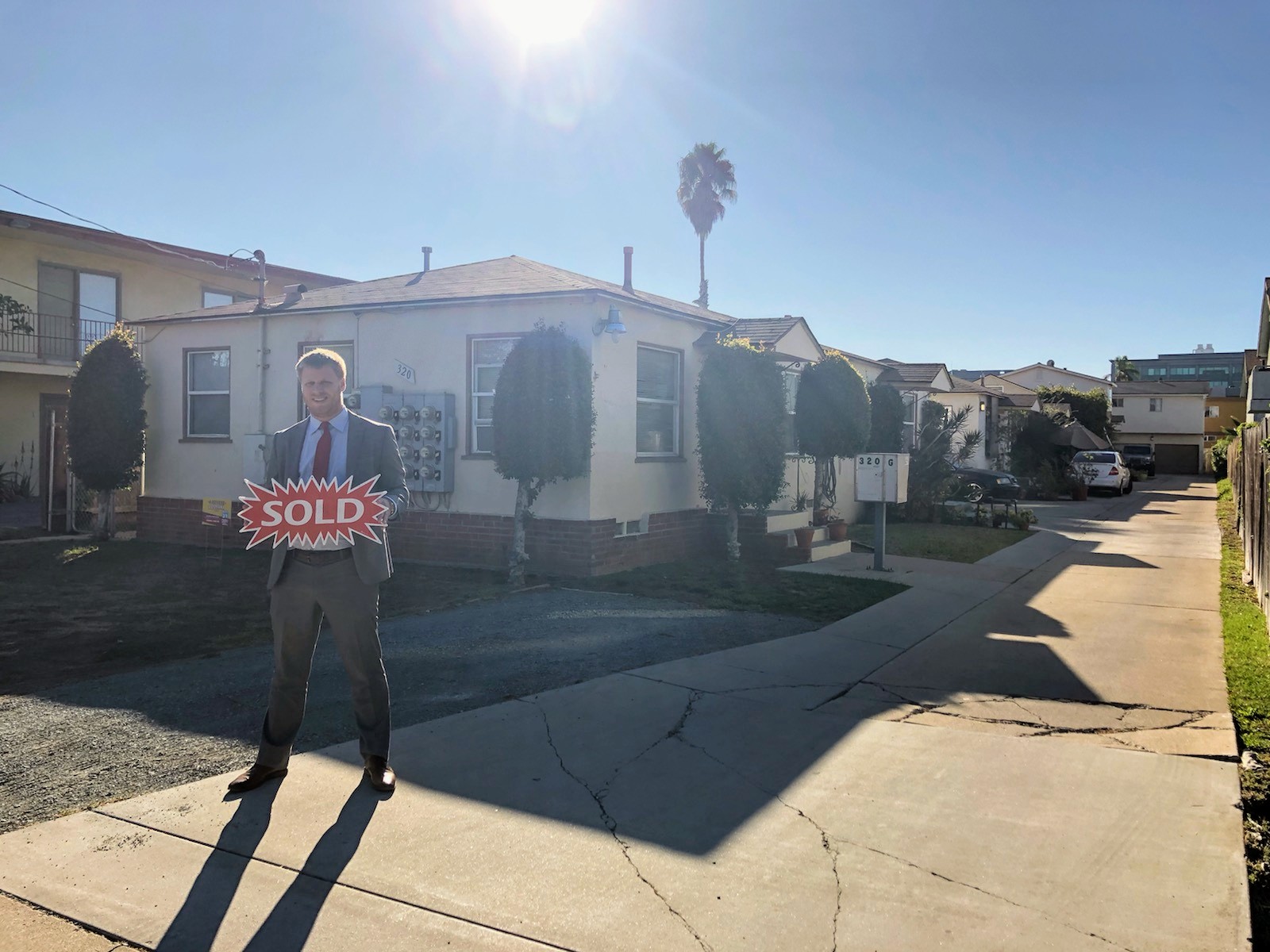
Strategies for Negotiating Commercial Leases
October 27, 2019
Chula Vista Apartment Complex Sells for $2,300,000
November 6, 2019
Disclaimer: I am not an attorney and this article is not intended as a substitute for advice from the appropriate legal, zoning, financial, construction and/or tax professionals. This information is provided for educational purposes only and is made without warranties or representations
I recently closed the sale of a 12 unit apartment complex at 320 G Street in Chula Vista. The property had significant deferred maintenance and rents that were far below market rate. Underwriting for multifamily properties can be complicated.
The purpose of this article is to provide a basic framework that can be utilized by buyers and sellers in evaluating multifamily investment opportunities.
Disclaimer: This information is provided for strictly educational purposes and should not substitute for advice from licensed professionals including appraisers, engineers, contractors, tax or legal professionals. No warranties or representations are made.
Financial Metrics
The primary and most surface level assessment of apartment investments are based on financial performance.
The most common financial metrics are:
Cap Rate – Determined by taking the annual net operating income as a percentage of the value of the property. For example: A property that produces $60,000 per year in net income and has a value of $1,000,000 would equate to a 6% cap rate.
Gross Rent Multiplier – Determined by taking the value of the property and dividing by the gross annual rents(before any expenses). For example: A property with gross annual rents of $100,000 and a value of $1,000,000 would have a gross rent multiplier of 10.
Price Per Square Foot – A common metric for any real estate property price per square foot is determined by dividing the price by the total square foot of the structures on the property. For example: A 5,000 square foot building sold for $1,000,000 would equate to $200/SF.
Price Per Unit – A popular metric for apartment buildings, per unit pricing is determined by dividing the purchase price by the total number of rental units. For example: A 8 unit building sold for $1,000,000 would equate to $125,000/unit
Evaluating the financial metrics allow you to easily compare different properties. Furthermore, financial metrics are the primary evaluation tool of bank appraisers who determined the amount of financing available for a specific property.
Intangible Characteristics
While the financial metrics provide an initial assessment of a property it is important to understand the hard to quantify characteristics in order to reach an ultimate determination on value.
Intangible characteristics include:
Location – As the mantra goes, “Location, Location, Location”. Where a property is has a huge effect on its current and future value and is something that can be difficult to put a number on. For example: an 8 unit building located in close proximity to a downtown area is likely to experience faster rent growth than a similar building in a suburban or rural area. This does not mean that you can not make a good return investing in non-prime locations but that this factor should be incorporated in placing the ultimate value on a property.
Parking – Some properties have individual attached garages for all units, some have common area parking lots, some have no parking at all. While the amount of necessary parking varies based on the location and tenant profile of a property, generally speaking, a building with sufficient parking is able to retain tenants longer and charge higher rents. In some cases, dedicated parking(either garages or reserved spaces) can provide an additional income stream for a property that can be incorporated into the financial assessment.
Tenant Profile – The character traits of the tenants renting a property greatly impact its operating expenses and overall stability as an investment. For example: a building leased primarily to college students will have much higher turnover which results in higher maintenance, marketing, and vacancy costs. Conversely, a building serving seniors will have lower than average costs associated with turnover as tenants move in and out less frequently. Strong returns can be made serving all types of tenants however evaluating the cost of maintenance and turnover associated with specific tenant groups will allow you to more accurately forecast a property’s performance.
Actual VS Pro Forma
Broker will frequently forecast the future potential performance of a property as a sales tool to entice buyers. It is important to very carefully examine the feasibility of pro forma projections as they are often overly optimistic.
Proforma valuations will often include:
All units at market rent
Low vacancy rates
Unrealistically low operating expense ratios
Often times when evaluating pro forma numbers for a property people will forget to include the capital required to get to that point. If a pro forma calls for vacating, renovating and reletting a large portion of the units, then this expense should be added to the total cost as well as the carrying costs of financing while the project is being completed.
Understanding Expenses
Expenses are the most misunderstood part of evaluating multifamily investments. Expenses ratios are determined as a total percentage of the gross income of a property. Generally speaking, apartment complexes will have expense ratios between 30-40%. If the ratio is below this amount then the valuation has likely omitted several key expense categories.
The most common expenses omitted or underestimated are:
Vacancy – This is the lost rent from turning over a unit. The percentage of gross income lost to vacancy varies depending on the market and competence of the property manager. In a high demand rental market vacancy costs can be as low as 3% or in less desirable markets as high as 10-20%.
Management – A property manager will charge between 5-10% of the total collected rent. While self-managing your property is an option the cost of a 3rd party property management company is incorporated by lenders and prospective buyers and should be included in the annual operating cost of a building.
Capital Expenditures – While maintenance refers to the short term cost of keeping a property in good shape there are also less common repairs such as the roof, water heaters, air conditioning systems that should be factored into the budget through reserve planning. For example: if the cost to replace the roof is $30,000 and you anticipate having to replace the roof in 10 years then you should allocate $3,000/year or $250/month to the reserve account to offset this future expense.
Final Thoughts
Underwriting multifamily investments is both a science and an art as general intuition is required to evaluate many of the intangible characteristics of a property. My final piece of advice would be to spend more time running the numbers prior to engaging in a negotiation in order to have clarity on what you can afford to pay for a property.
If you are interested in buying or selling an apartment complex in San Diego County, please reach out through the contact page.
